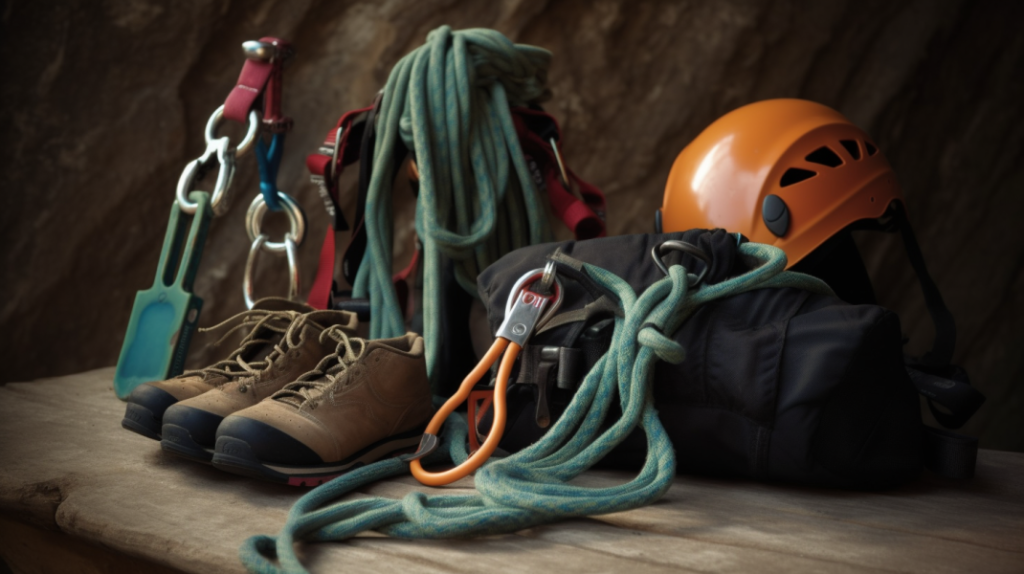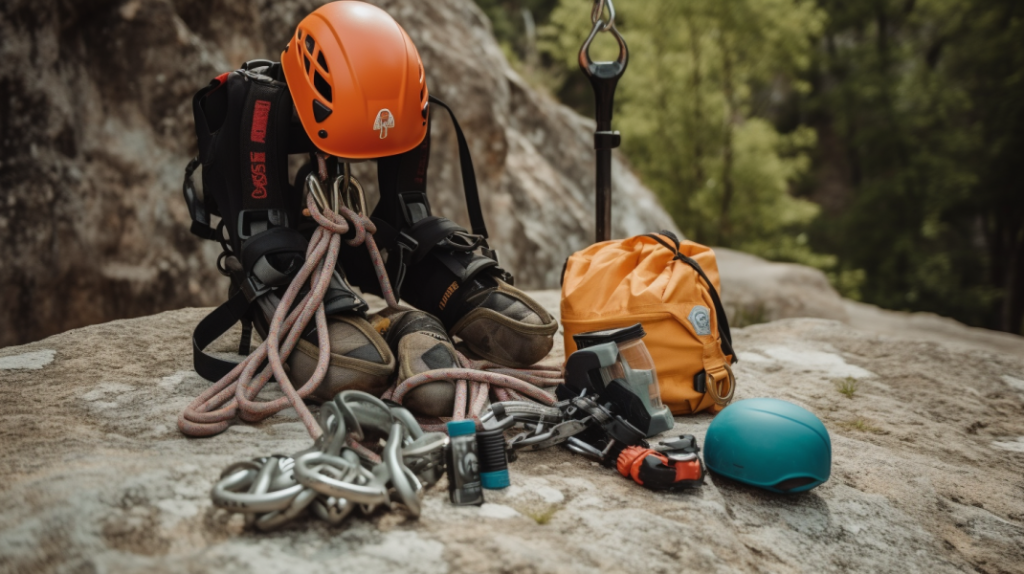Rock climbing is an exhilarating and challenging sport that requires physical strength, mental focus, and the right equipment. Whether you’re a beginner or an experienced climber, having the appropriate gear is crucial to ensure your safety and enhance your climbing experience. In this article, we’ll explore the essential gear needed for rock climbing, detailing each item’s purpose and significance in ascending cliffs, crags, and boulders.
Climbing Shoes
Climbing shoes are the foundation of your gear. These specialized shoes have sticky rubber soles that provide excellent grip on the rock surface, enabling you to cling to tiny footholds and cracks. Properly fitting climbing shoes are essential, as they offer better precision and sensitivity, increasing your ability to feel the rock and maintain balance.
Harness
A climbing harness is a vital safety component that connects you to the rope. It should fit snugly but comfortably around your waist and legs. Modern harnesses are lightweight, adjustable, and equipped with gear loops to hold essential equipment such as carabiners and quickdraws.
Climbing Rope
The climbing rope is your lifeline, serving as the connection between you and your belayer, who manages the rope to catch your falls. Dynamic ropes are the standard choice, designed to absorb impact forces in case of a fall. Ropes come in various lengths and diameters, so ensure you select the appropriate type for your climbing style and location.
Carabiners and Quickdraws
Carabiners are essential tools for attaching climbing equipment to your harness or anchoring points. Quickdraws consist of two carabiners connected by a short nylon or Dyneema sling. They are used to secure the rope to bolts or other protection points on the rock. Quickdraws allow for smoother and quicker clipping during your ascent.

Climbing Helmet
Safety should always be a priority in rock climbing, and a climbing helmet is crucial for protecting your head from falling debris and accidental impacts. Choose a lightweight, comfortable helmet with proper ventilation to ensure you’ll wear it throughout your climbing sessions.
Belay Device
The belay device is used by the belayer to manage the rope and catch the climber’s falls. There are various types of belay devices, such as tube-style and assisted braking devices. Make sure to learn how to use your chosen device correctly and practice belaying techniques before climbing with a partner.
Chalk and Chalk Bag
Climbers often use chalk to keep their hands dry and increase friction while gripping holds. A chalk bag attached to your harness allows for easy access to chalk during the climb. Remember to use chalk responsibly to protect the environment and the rock surfaces.
Climbing Holds and Crash Pads (for bouldering)
For bouldering enthusiasts, climbing holds are essential for indoor training or setting up a home climbing wall. Additionally, crash pads are thick foam pads placed beneath bouldering problems to cushion falls and reduce the risk of injuries.
Conclusion
Rock climbing is an adventurous and rewarding sport that requires the right gear to ensure both safety and success. Climbing shoes, harness, rope, carabiners, quickdraws, helmet, belay device, chalk, and chalk bag are the primary equipment you need for traditional rock climbing. For bouldering, climbing holds and crash pads are essential additions.
Remember always to prioritize safety and invest in quality gear from reputable brands. Additionally, seek professional instruction and guidance if you’re new to climbing to learn the necessary skills and techniques. With the right gear, knowledge, and enthusiasm, you can embark on an incredible rock climbing journey, conquering new heights and experiencing the thrill of scaling vertical landscapes. Happy climbing!

